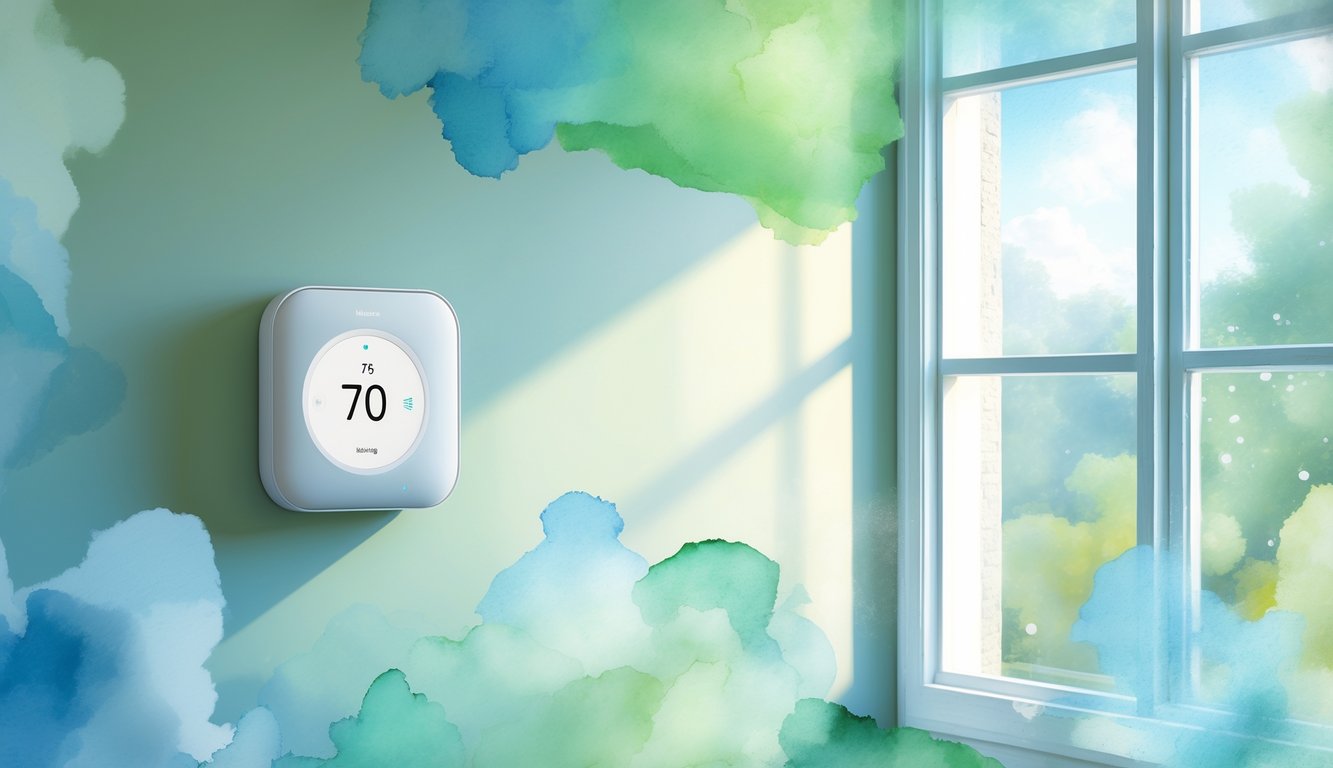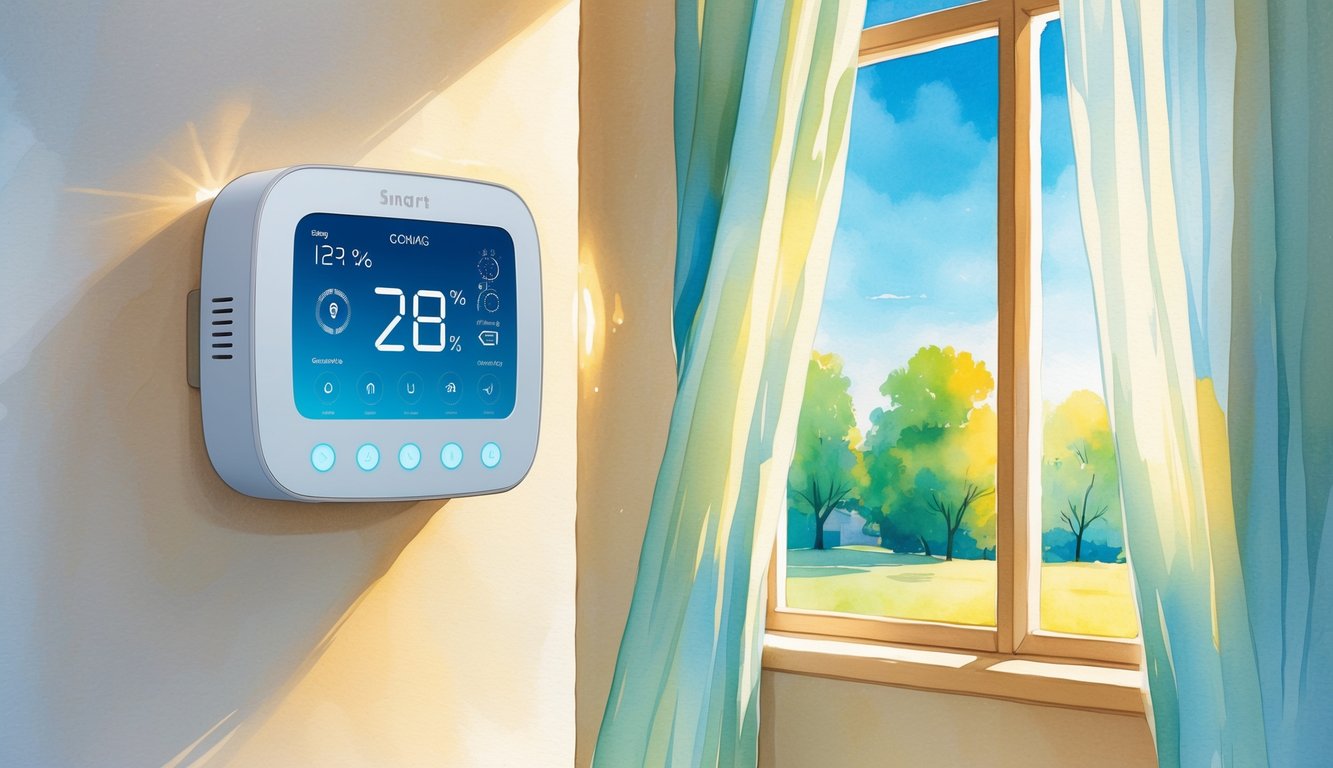
Every summer, somebody on my block starts bragging about new windows, like that’s the golden ticket to a lower utility bill. “Knocked $30 off last month!” they say, like I’m supposed to be impressed. Meanwhile, my old double-panes are still foggy and probably original to the house, but my cooling bill? Last July, it dropped hard. And all I did was swap out my ancient thermostat for a smart one. That’s it. That little plastic rectangle—barely noticed, no drywall mess, no parade of contractors—just quietly shaved about 12% off my yearly cooling costs. Honestly, the return on investment smoked whatever my neighbors got from their expensive window swaps, which is weird. I mean, I read some Energy Star thing (can’t believe I bothered) that says most people with new windows only see like 8% savings, unless their old ones were basically falling out.
Is there a catch? If there is, it’s hiding. Unless you count me fiddling with the app at 2am because I’m convinced I’ll wake up freezing or sweating. Nest claims their average customer saves $131 to $145 per year—Nest, not even Ecobee, which my friend swears by. She won’t shut up about its “eco+” mode and how “the algorithm watches when I nap.” I asked an HVAC tech—like, an actual expert—and he just laughed. “Windows aren’t even close for payback time. Unless yours are cardboard, do the thermostat first.” Makes sense, honestly. The thing learns your routines, disappears into the background, and the kids can’t secretly crank it down when I’m out.
I looked at my electric bill from last August—those bar graphs don’t lie. The difference wasn’t the windows. It was the thermostat. But do I trust the numbers, or the endless online window hype about making your house “tight as a jar?” If anything’s sealed tight, it’s my phone after I checked my cooling costs.
Why Smart Thermostat Upgrades Outperform New Windows for Cooling Savings

I’ve spent summers taping up window film, yelling at the kids about leaving doors open, and still, my smart thermostat did more for my bill than any window “upgrade.” Even the EPA says modern thermostats usually save 10-15% on cooling, while new windows? The math never adds up the way the sales pitch promises.
Comparison of Cost vs. Savings
Let’s talk money. I got quotes for “energy-efficient” double-pane windows last year—$1,200 per window. No one warns you about mismatched trim, either. My smart thermostat? $150. Two years later, it’s paid for itself, even if you don’t buy the Department of Energy’s “up to 15%” claim. It’s almost ridiculous. Unless your windows are falling apart, the IRS even says the thermostat wins for payback. There’s a difference between “maybe someday” savings and real cash, and every HVAC pro I’ve met says the same: the thermostat’s the move. But window people never mention that when their glass fogs up.
Energy Usage Differences
New windows help with drafts, sure. But for cooling? They barely register. Once my HVAC system figured out my weird schedule—random midnight snacks, laundry marathons—the thermostat’s algorithm kept the AC off more than my nagging ever did. Windows just sit there. The thermostat’s bossy. By week two, it plugged all the leaks in my routine, not in my window frame. It just works, always, even when I forget it exists. The Department of Energy’s stats—10-12% for heating, 15% for cooling—keep echoing in my head every summer when my neighbor starts bragging about his Low-E coatings, which, let’s be honest, don’t matter when his dog leaves the door open all afternoon.
Impact on Utility Bills
I open my energy bill, ready to wince—nope. The year I switched to a smart thermostat, my bills dropped. Remotely cutting the AC when I’m not home made a bigger difference than my ancient windows ever could. My utility company basically begged me to take a rebate for upgrading. It’s kind of wild—a $150 gadget outperforms a $10,000 window job, but my “heating and cooling” line item doesn’t lie. Unless a hurricane rips your windows out, smarter climate controls are the only way I’ve actually saved money without waiting half a decade for results.
How Smart Thermostats Deliver Higher Energy Efficiency
Thinking about home upgrades and energy bills always reminds me of when I replaced my drafty windows, only to realize the HVAC never stopped running. Smart thermostats don’t just sit there—they’re constantly doing something, chopping off unnecessary cooling cycles, dialing things back when the house is empty, even if I forget it exists. The real savings come from all that behind-the-scenes automation, not from swapping out hardware like windows.
Precision Temperature Control
Let’s be honest, I’m never precise with the thermostat after dinner, especially if the sun’s blasting through the west windows. But a Nest or Ecobee? They’re always sampling, picking up motion—sometimes it’s just my dog, but still. That matters when it’s 90 degrees outside. Instead of the old blast-and-wait routine, I get little nudges, more often.
I saw a Harvard study somewhere—claimed smart thermostats cut cooling energy up to 15%. What stuck with me was how fast they react to tiny changes. It’s not about chasing the “perfect” number, just staying in a comfort range. No more “Did I leave it at 72 or 78?” panic attacks while I’m driving.
Automatic Adjustments and Learning Algorithms
Manual programming? That’s for my parents, with sticky notes taped everywhere. I tried Ecobee and Honeywell last summer—both use algorithms and location data, so my habits (late mornings, grocery runs, whatever) get crunched automatically. If the house empties out, cooling drops or shuts off. It’s a little creepy, how the thermostat gets better at predicting my schedule than I am, but the electric bill doesn’t lie. Nest says 10-15% average savings, and I actually saw about $25 off in June. All because the thing decided nobody needed cold air in an empty house. It’s not about being colder or warmer—it’s about wasting less.
Energy-Saving Modes
“Eco” mode, or whatever they call it—at first, I thought it was a gimmick. But the AC stopped running on cloudy afternoons, and ENERGY STAR (way more reliable than my guesses) says these modes really do cut usage. I’ve compared bills over three summers, toggling these modes. The thermostat seems to “wait out” quick heat waves instead of panicking and blasting the AC. Apparently, newer models even sync with utility-rate data, shifting cooling to off-peak hours. I barely notice, but my bill does.